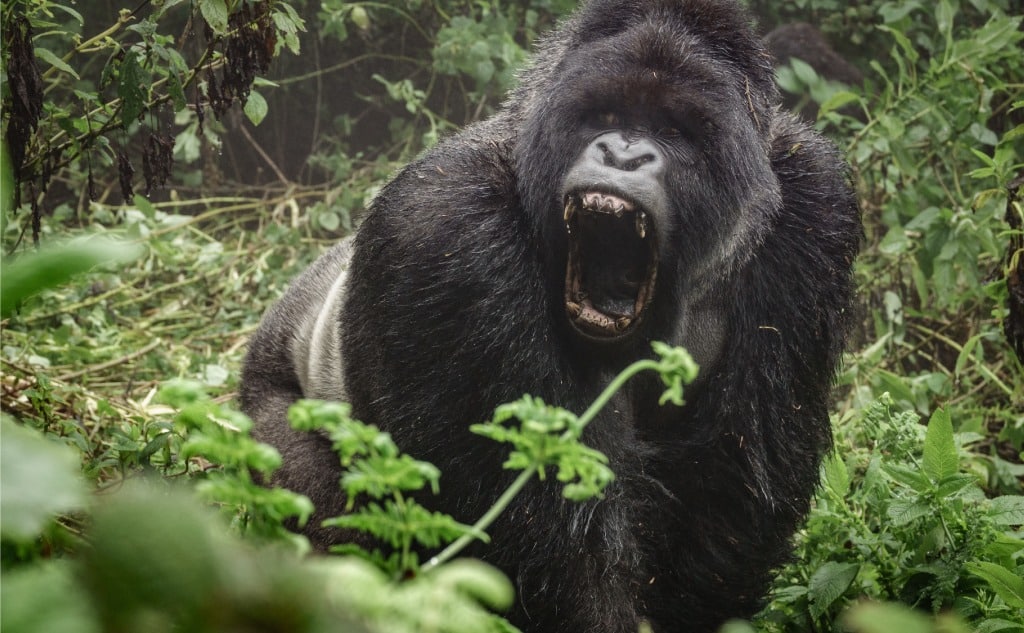Here’s whether a gorilla or an elephant wins in a fight:
A silverback gorilla can do absolutely nothing to an adult elephant. A gorilla can throw rocks, wield a stick, slap, punch, and bite, but it will only scratch the elephant.
Elephants are the largest land mammals in the world. Even a handful of gorillas in an organized attack would be unable to defeat an adult one.
If you want to learn all about why an elephant has the upper hand against a gorilla, then this article is for you.
Let’s get started!
How Can a Gorilla Kill an Adult Elephant?
An adult male gorilla (silverback) can’t defeat a healthy, adult elephant. It may be able to win if the elephant is terminally ill or very young.

A gorilla’s only advantage is its ability to use objects as weapons, but that’s too elementary to threaten elephants. If gorillas don’t find a way to produce mechanized weapons or firearms, there’s no real chance to defeat a healthy adult elephant.
The Skin vs. The Teeth
An elephant’s skin is 1 inch (2.5 cm) thick in most places. The gorilla’s upper and lower canines are 2 inches (5 cm) long.
So, a silverback would be able to penetrate the elephant’s skin if he got close enough to bite.
How and When Do Elephants Fight?
Male elephants mostly fight other males to claim dominance. The testosterone that rises during monsoon season drives the Asian species of elephants to a state known as “musth.” When in musth, male elephants become aggressive, restless, and eager to fight.
Why these elephants become aggressive during monsoon season remains a mystery. Females go into heat throughout the whole year, so that’s probably not reason.
Elephants are more likely to attack humans during monsoon season, as well. Studies show a higher incidence of elephant-related deaths in humans during this period.
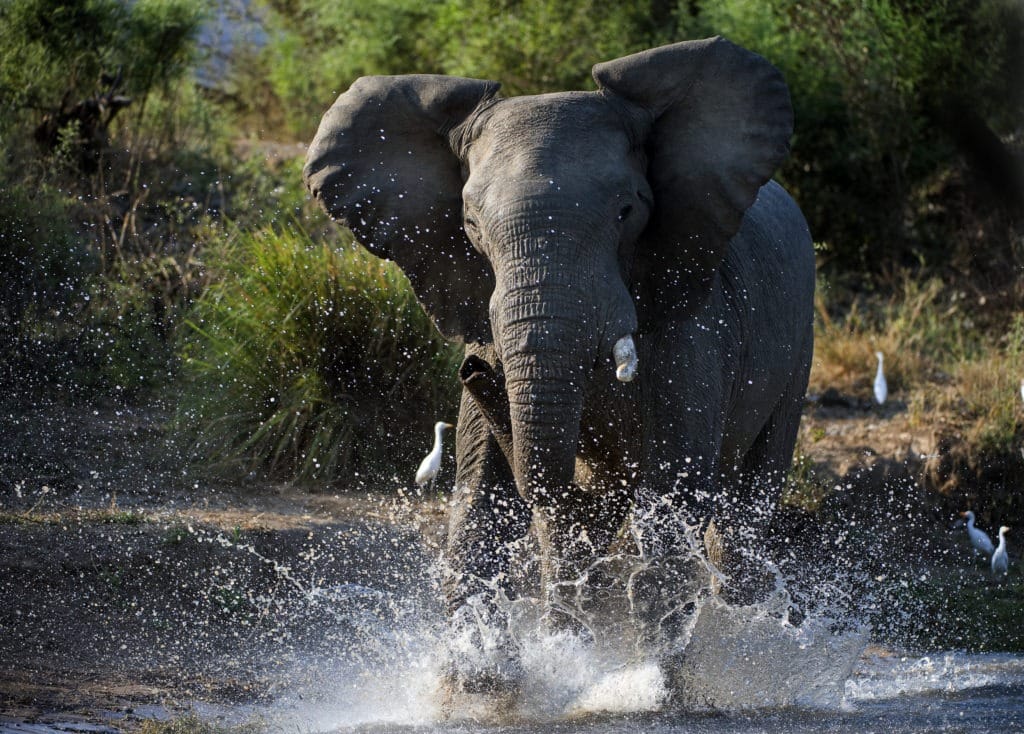
While there’s a periodic pattern for the musth phenomenon in Asian elephants, their African counterparts are different. They can go into musth that lasts 1-3 months once, twice, or three times per year, regardless of environmental factors.
The tusks and trunks reach their full potential during musth. Only the African elephants have tusks, and they use them for fighting. They fight with their tusks locked and with the trunks draped over them.
Asian elephants lacking tusks fight by pushing their heads against their opponents. At the same time, they hold their trunks in their mouths to avoid accidentally stepping on them.
An Elephant’s Tusks and Trunk
The tusk of a male adult elephant weighs between 110 and 175 lbs (50-79 kg). A female’s tusk is quite lighter at 40-44 lbs (18-20 kg). There are cases of extraordinarily large tusks. The heaviest one ever weighed was 220 lbs (100 kg).
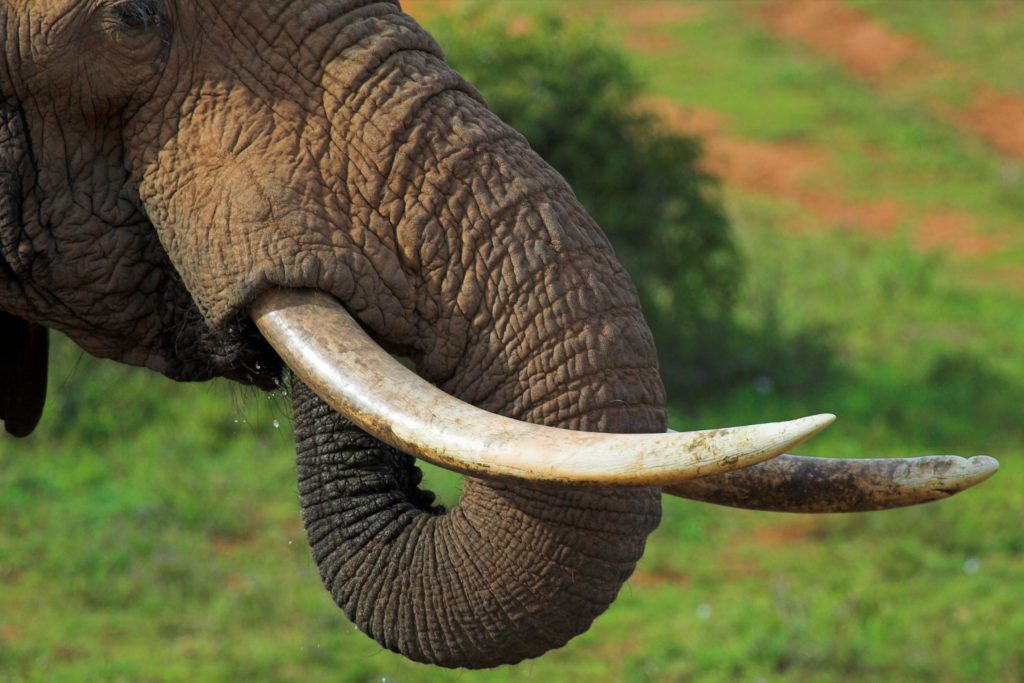
Anatomically, the trunk is an unusual combination of a nose and upper lip with nostrils at the tip. This large and powerful weapon weighs around 290 lbs (130 kg) and is capable of lifting a 550 lbs (250 kg) load.
Can Elephants Become Aggressive?
Yes, elephants can be aggressive towards other species. It usually happens when they are sick, injured, or harassed. Mother elephants get defensive of their calves.
When an elephant feels threatened, it mainly wants to show its superior strength and social position to its opponent. The angry males stare into the eyes of the threat, spread their ears out, and raise their heads and tusks high.
In severe cases, elephants attack by charging the opponent. Using its tusks, the animal will gore, throw, and crush the victims along with continuous stomping.
Elephants can tear down trees and flip cars. They can run at a 25 mph (40 km/h), so there’s minimal chance of getting away alive.
Gorilla runs at approximately the same speed. It’s also got good endurance. Gorillas are one of the rare animal species that might get past a charging elephant.
What Can Kill an Elephant?
Few animals in the world can kill or seriously harm an elephant. Some of them fight with elephants for food and others for territory. In any case, if the elephant loses, it’s probably because it was too young, too old, or too sick.
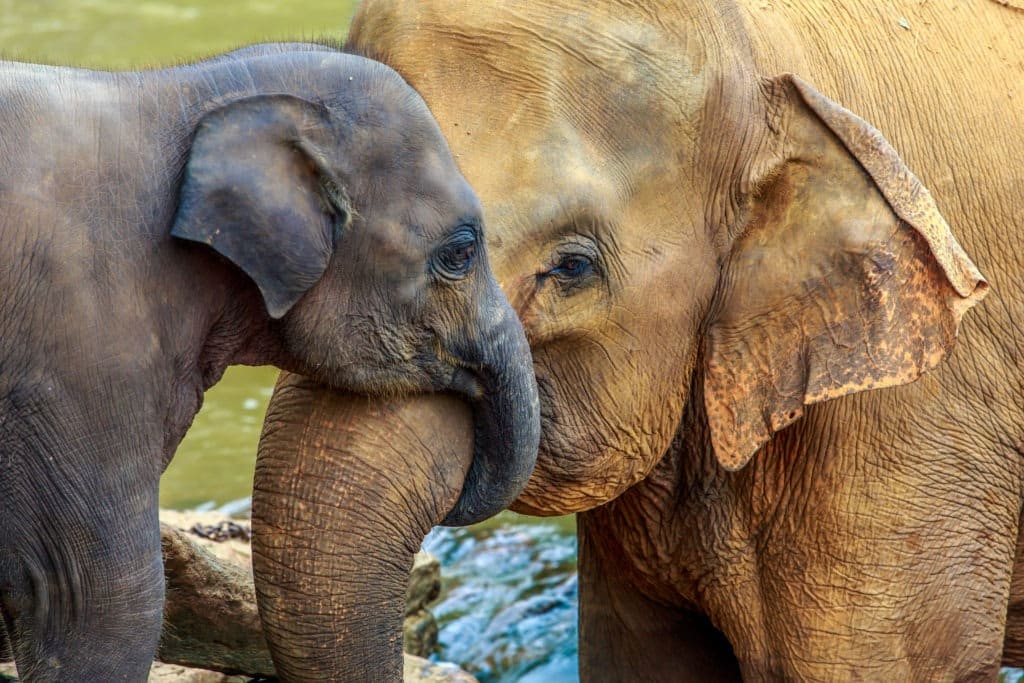
The elephant’s natural enemies are:
- African lion
- Saltwater crocodile
- Rhino
- King cobra
- Hyena
- Human
Inter-species clashes occur most frequently between elephants and rhinos battling for territory, followed by African lions and saltwater crocodiles hunting elephants for food.
A saltwater crocodile can kill and eat a baby elephant on its own. As for the older elephants, it bites their trunks off and waits for them to die of malnutrition.
Humans are the elephant’s worst enemies. Using various weapons, poachers still kill elephants today.
Are Gorillas or Elephants More Dangerous to Humans?
Every year, elephants kill 100 to 500 people. Sometimes they accidentally gore or step on a human, but sometimes they deliberately raid villages.
Their sheer size and weight are enough to give a lethal blow with only one strike.
Do Gorillas and Elephants Meet in Nature?
Even though gorillas and elephants don’t meet face-to-face in nature, they do share some mutual habitats and play huge roles in their ecosystems.
Dzanga-Sangha: Mutual Habitat of Gorillas and Elephants
The Dzanga-Sangha is a protected landscape situated in the Congo Basin in Central Africa.
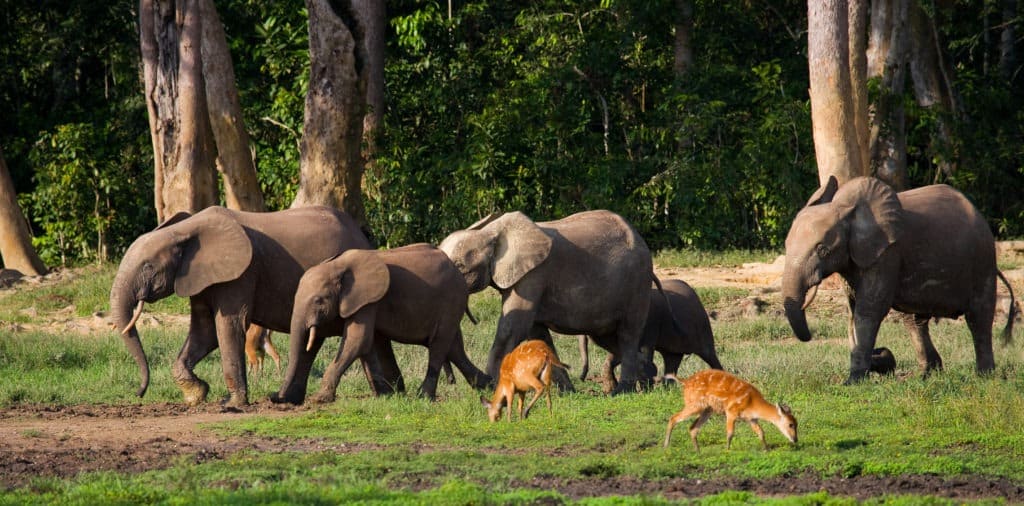
The area is home to western lowland gorillas and forest elephants. The diversity of tropical rainforest ecosystems makes it possible for both species to coexist among other animals.
Albertine Rift Valley—A Sanctuary for Gorillas and Elephants
The Albertine Rift Valley covers parts of Uganda, Rwanda, Burundi, Tanzania, and the Democratic Republic of the Congo. This is an important ecoregion that transitions from lowland to mountainous forests.
Across this 750-mile (1207 km) valley roam African forest elephants and eastern lowland gorillas. Both subspecies are critically endangered, and this is one of the rare places in the world where they can meet.
How Many Elephant Species Are There?
There are three species of elephants:
- Savannah elephant (African forests)
- Forest elephant (African savannahs)
- Asian elephant
Forest elephants weigh between 4000 and 10000 lbs (2-5 tons). They can reach 8-10 ft (2.4-3 meters) tall. A forest elephant lives in dense tropical forests in the west and central Africa.
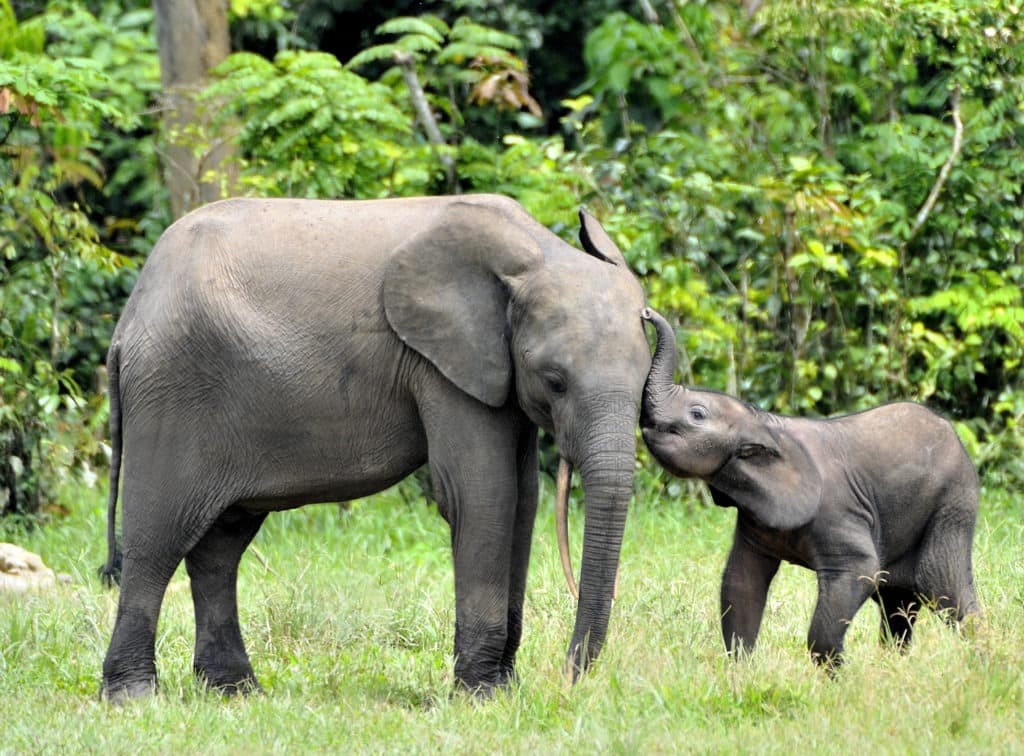
Most of their small population is located in the Republic of Congo and Gabon.
Asian elephants are in-between the two African species regarding their size.
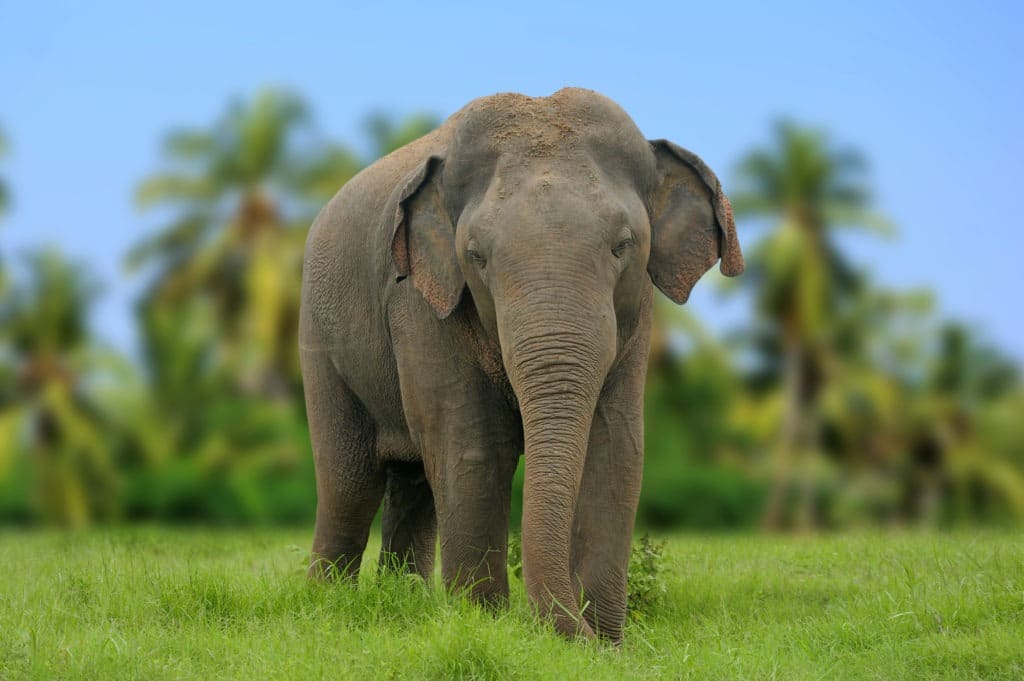
The African savannah elephant is the largest of the three species.
Adults can weigh 8000 to 14000 lbs (4-7 tons) and be 10-13 ft (3-4 meters) high. They inhabit all sub-Saharan parts of Africa except for the dense tropical forests in Central Africa.

The largest population of savannah elephants is in Tanzania, Zimbabwe, Botswana, Kenya, Zambia, Namibia, and South Africa.
How Many Gorilla Species Are There?
There are two species of gorillas in Africa:
- The eastern gorilla
- The western gorilla
Eastern gorillas can be divided into mountain and lowland gorilla species, and the western species has lowland gorillas and Cross River gorillas.
Cross river gorillas occupy a 3000-square-mile (7770 square km) area in Nigeria and Cameroon.
When standing on both feet they can be 4-5.5 ft (1.2-1.7 meters) tall. Adults weigh up to 440 lbs (200 kg).
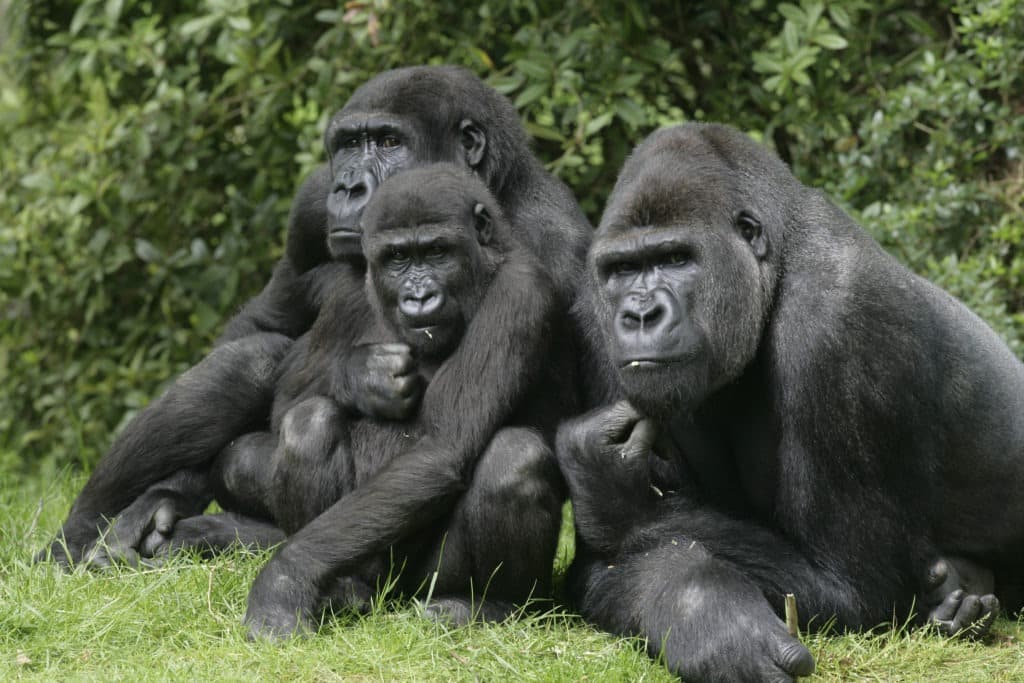
Their closest cousins, the western lowland gorillas, are the most widespread of all. Their height and weight are pretty much identical to the Cross River type.
The eastern lowland gorilla is the largest of all of the four subspecies. They have the shortest muzzles.
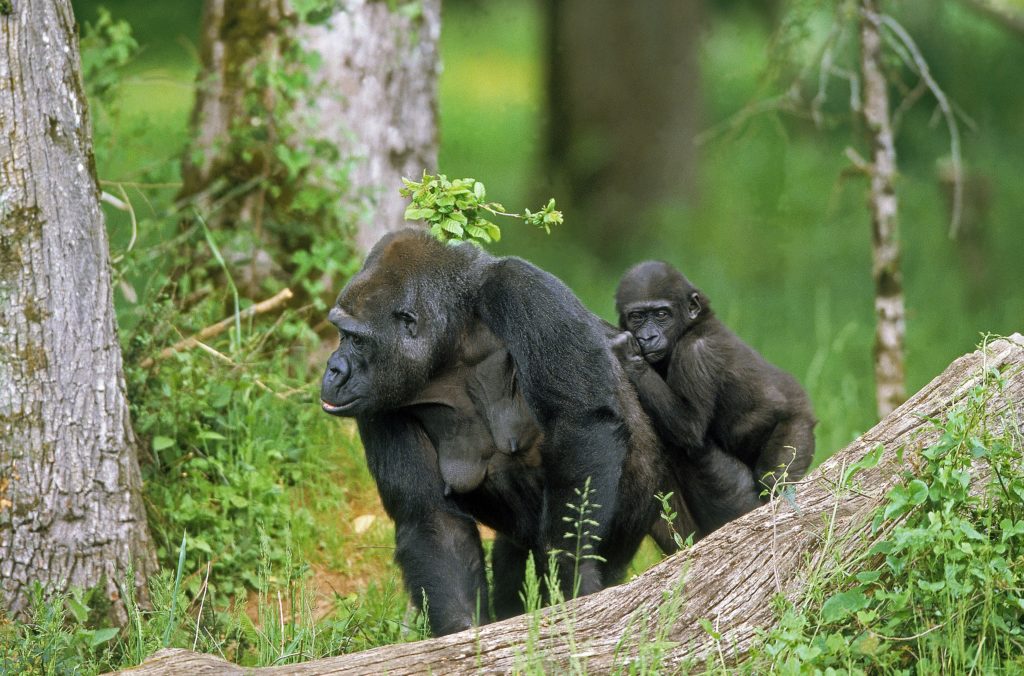
Mountain gorillas live in Uganda, Rwanda, and the Democratic Republic of the Congo. Their skin is covered with a thicker and more abundant coat to keep them stay warm when the temperatures in the mountains drop.
Comparison of Elephant and Gorilla Attributes
We will compare the two largest representatives of the gorillas and the elephants.
| The African Savannah Elephant | The Eastern Lowland Gorilla | |
| Body height | The height can vary between 10 and 13 ft (3-4 meters). | In an upright stance, they can reach 5.5-6 ft (1.7-1.9 meters) tall. |
| Bodyweight | Adults can weigh 8000 to 14000 lbs (4-7 tons) | Gorillas can reach up to 300-500 lbs (136-227 kg). The females are almost half the size, with an approximate weight of 150-250 lbs (68-113 kg). |
| Size difference according to sex | Males are larger than females | Males are larger than females |
| Running speed | They can run 25 mph (40 km/h) | Most species of gorillas can run with a speed of 20 mph (32 km/h) for long bursts. Adult males can even reach a running speed of 25 mph (40 km/h). |
| Behavior | Herbivore, dominant, social, periodically aggressive | Herbivore, dominant, very social, cautious |
| Attacking strategy | Use the tusks for gore attacks, head for blunt attacks and trunk for throwing | Intimidate with sounds, use rocks and sticks, rarely bite |
| Prey | Not a predator | Not a predator |
| Geographical distribution | Sub-Saharan Africa, South Asia, Southeast Asia | Central Africa |
